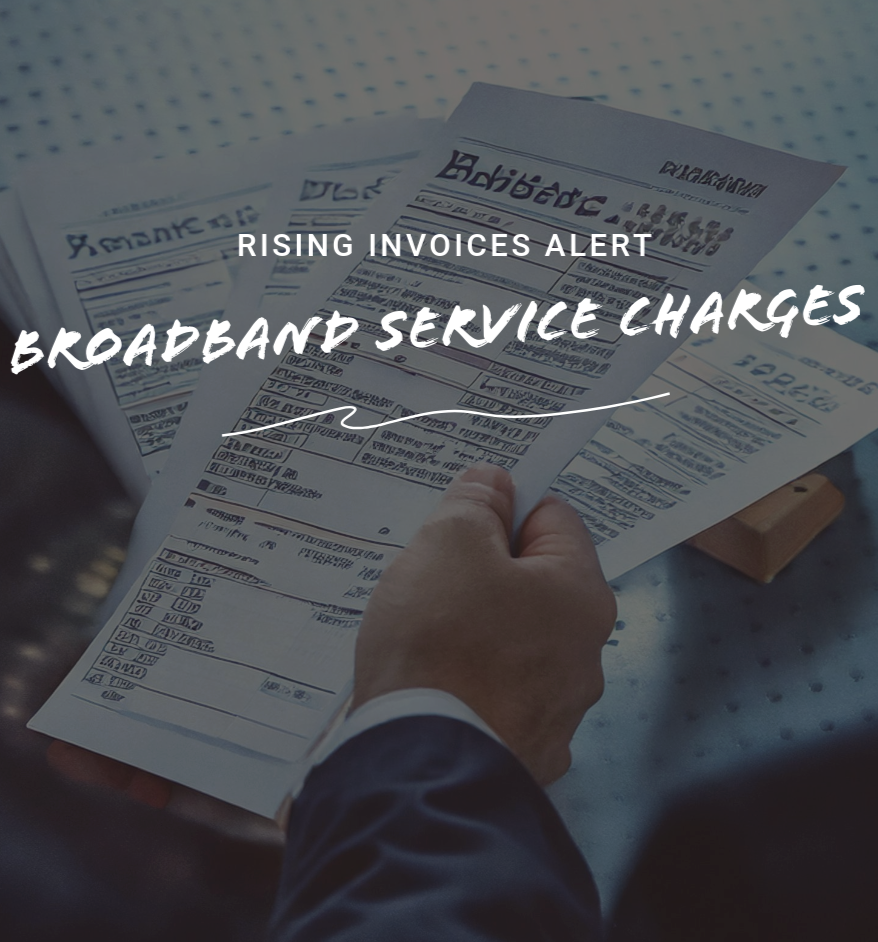In recent years, broadband bills have been steadily rising, often outpacing inflation and leaving many consumers with higher monthly costs. This trend, combined with the complexity of internet service plans, means that a significant number of people may be paying for services they don’t fully utilize. Understanding why prices are going up and evaluating whether you’re getting the right plan for your needs can help you manage costs more effectively.
Why Are Broadband Prices Rising?
There are several key factors contributing to the increase in broadband prices:
1. Inflation and Rising Operational Costs
Broadband providers, like many other businesses, face rising operational costs due to inflation, increased energy prices, and the need to maintain and upgrade infrastructure. These costs are often passed on to consumers in the form of higher monthly fees.
2. End of Introductory Offers
Many broadband providers offer low introductory rates to attract new customers. These deals often last for the first 12 to 18 months of the contract. After this period, customers are usually switched to a much higher standard rate, sometimes without sufficient notice. This pricing structure can result in significant price increases after the initial term.
3. Bundled Services
Many internet service providers bundle broadband with other services such as television, home phone, or mobile data plans. While bundling can offer discounts, it can also result in consumers paying for services they don’t use. Over time, ISPs may also increase the prices of bundled packages without a corresponding increase in value.
4. Limited Competition in Some Markets
In areas where broadband providers have limited competition, there is less incentive for price reductions. In many regions, a single provider or just a few companies dominate the market, which can lead to higher prices due to a lack of alternatives for consumers.
Are You Paying for More Than You Need?
Broadband plans are often marketed with high-speed options and added features, but many consumers end up paying for more than they actually need. Here are several factors that may indicate you’re overpaying for your broadband service:
1. You’re Paying for Speed You Don’t Use
Many consumers sign up for high-speed broadband plans, often because they believe it’s the best option. However, unless your household engages in high-demand activities such as 4K video streaming, large file transfers, or online gaming, you may not need the speeds offered by premium plans. Most households only need 50-200 Mbps for everyday activities like browsing, streaming standard-definition content, and video calls. Higher-speed plans (such as 1 Gbps or more) are often unnecessary unless there are multiple devices in use at the same time, or if you regularly work with large files.
2. Your Devices Aren’t Using the Full Bandwidth
Even if you’re paying for a high-speed plan, your devices may not be capable of utilizing the full bandwidth. Many smartphones, laptops, and tablets don’t require high-speed connections for standard internet usage. Furthermore, older routers may not be able to handle the speeds that your broadband plan offers. This means that you could be paying for bandwidth that your equipment is not fully able to use.
3. You Don’t Use Extra Features
Broadband plans often come with additional features like security software, cloud storage, or access to streaming services. While these extras can be beneficial, many consumers don’t take full advantage of them. If you’re not using these features, you might be paying for them without getting any value in return. This is especially common with bundled packages that include services like television or mobile data, which may not be relevant to your needs.
4. Your Internet Usage is Relatively Low
For households with light internet usage—such as browsing the web, checking email, or occasionally streaming video—a basic broadband plan may be sufficient. Despite this, many people opt for higher-tier plans with more bandwidth, thinking they’ll benefit from faster speeds, when in reality they don’t require the extra capacity. Understanding your actual usage can help you avoid paying for more than what’s necessary.
5. You’re Locked into a Long-Term Contract
Some ISPs offer long-term contracts with the condition that customers stay locked into a plan for 12, 18, or even 24 months. While these contracts may offer lower initial prices, they often lead to higher costs over time, especially after the introductory period ends. Additionally, customers may face cancellation fees if they want to change providers or downgrade to a cheaper plan.
How to Avoid Overpaying for Broadband
To avoid paying for more broadband than you need, it’s important to evaluate your actual usage and the plan that best fits your needs. Here are a few strategies to help reduce your broadband costs:
1. Assess Your Internet Usage
Take a closer look at your household’s internet usage. Consider how many people are using the internet, what they’re using it for, and how much data they typically consume. Tools like speed tests can help you determine your current internet speeds and whether you’re using all of the bandwidth your plan provides. If you find that your usage doesn’t align with the high-speed plan you’ve chosen, consider downgrading to a lower-tier option.
2. Negotiate with Your Provider
Contact your broadband provider to discuss your bill. If you’ve been a loyal customer for a long period, or if you’re currently paying for services you don’t need, there may be an opportunity to negotiate a lower rate. Some providers are willing to offer discounts or even downgrade your plan to a more affordable option if you ask.
3. Review Bundled Packages
If you’re subscribed to a bundle of broadband, TV, home phone, and mobile services, evaluate whether all of these services are necessary. If you don’t use the television service or the home phone line, for instance, removing these elements could reduce your bill. Consider switching to a broadband-only package if other services are not adding value to your overall experience.
4. Compare Other Providers
If you’re in an area with multiple broadband providers, it’s worth comparing prices and plans to ensure you’re getting the best value for the services you need. Look beyond promotional offers and carefully review the terms, including the length of the contract and any potential price hikes after the introductory period. Switching providers could save you money, especially if a competitor offers better pricing for similar or superior service.
5. Upgrade Your Equipment
If you’re paying for high-speed broadband but your current router or Wi-Fi equipment is outdated, it could be limiting the performance of your internet connection. Upgrading to a modern router or mesh Wi-Fi system can help ensure that you’re making the most of your broadband plan, without needing to pay for additional bandwidth that isn’t being fully utilized.
Conclusion
Broadband bills are rising, but that doesn’t necessarily mean you need to accept higher costs. By evaluating your actual internet usage and being proactive in managing your plan, you can often find opportunities to lower your broadband bill. This might involve downgrading your speed, removing unnecessary extras, or switching to a different provider. With a bit of research and attention to detail, you can ensure that you’re only paying for the broadband services you actually need—without overpaying for features and speeds that don’t offer any real benefit.




